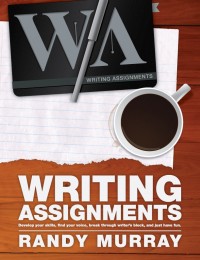If you’re a writer, you need a reader.
That may seem dazzlingly obvious, but I’m not talking about the person who may eventually read what you’ve written. I’m talking about someone you have in mind before you begin writing.
I don’t care if you’re a “blogger”, a poet, a novelist, or someone who writes marketing copy. You need a reader. You need someone who is your model, someone who you are writing specifically for. Without this idea of who you’re writing for you might find that you’re writing just for yourself, or worse, for no one at all.
William Gibson is a talented, wonderful writer, but he’s cursed with fans who want him to do nothing by rewrite “Neuromancer” over and over again. But he does not. He has moved on and his imagination and skill as a writer is growing. I had to smile when I read the first page of “Spook Country.” The opening is a barrier, an intentionally barred door to “the wrong” readers. If you’re not prepared to let him tell the story his way, you can’t find your way in. But if you pause, relax, start over, you’re suddenly in his world and off on an adventure. Gene Wolfe demands the same thing from his readers: “Let me tell it MY way.”
They both have ideal readers in mind. Both Gibson and Wolfe know who they’re writing for. They’re writing for a reader who has an open mind, someone who is sensitive to words and images. They are not writing for people with fixed ideas and hoped-for stories.
So I ask again, who are you writing for?
When I write for a business client, I try to build a model of the targeted audience, their ideal reader. That’s not always easy. Too many businesses are caught up in their own internal jargon and it’s very difficult to help them understand that their customers don’t talk or necessarily think the same way they do. When I can achieve a breakthrough, we can shape everything for that perfect reader and we typically get amazing results. Web traffic goes up. SEO becomes an unnecessary afterthought. If you’re writing for the right person, everything else become natural and easy.
Yes, you need an editor, but before your editor can really help you, they also need to understand who you’re writing for. That profile needs to be a part of the instructions that you give your editor. Without that, they don’t know how to tune the reading level or to help you with the formality or informality of your writing. Your reader profile can’t be “anyone/everyone.” This profile needs to be as detailed as possible.
In this place, on this blog, I’m writing for a fairly well educated, largely adult business audience. You are likely to be technically sophisticated and experienced and have (or are working towards) a role in business. You’re curious, have a sense of humor, and are willing to consider offbeat ideas, possibly even try them out. You are actively seeking solutions to problems. You’re likely to be interested in ideas and are willing to think and ponder new thoughts and ideas. And you yourself value great writing and want to write better yourself.
I’m not setting out to flatter you when I say these things. You’re reading what I write because I’ve thought through my ideal reader.
This model person I’m writing for is part me, part Penny, my editor, and a great deal like my business clients. And because I’m writing with this model in mind, I can avoid the pitfalls and distractions that may drive my desired readers away. Penny blows the whistle on me pretty quickly when I go astray and more often than not she’s right. She helps me set a consistently informal tone, as she puts it, “jacket and tie, not tux, not jeans.”
This model and the resulting writing also is finding a larger general audience, which is fine, but doesn’t really shift who I’m writing for. If they stay readers long enough they are most likely more like my model than they suspect
Who are you writing for? Who reads for you?

